FAQ
A handpan is a musical instrument made of two steel half-shells glued together. It’s part of the steel drum family and produces melodic and percussive sounds when struck by hand.
The handpan is typically played with the hands and fingers. Players tap the tone fields (shaped areas on the surface) to create different notes. The technique involves a gentle, controlled touch to produce clear, resonant sounds.
Handpans come in various scales, each offering a different range of notes and tonal character. Common scales include D Minor, C Major, and Akebono. The number of notes can also vary, typically ranging from 7 to 15.
Choosing a handpan depends on personal preference for scale, sound quality, and budget. Beginners might start with a basic scale like D Minor, while more experienced players may prefer a specific scale that resonates with them.
Handpans require regular maintenance to prevent rust and retain sound quality. This includes wiping down with a microfiber cloth after use, occasional application of handpan oil, and storing in a dry, temperature-controlled environment.
Yes, handpans can go out of tune over time and may require professional tuning. This process should be done by an experienced handpan tuner.
The handpan is relatively easy to start playing, as it doesn’t require complex techniques to produce a pleasing sound. However, mastering the instrument and playing more complex compositions takes practice and dedication.
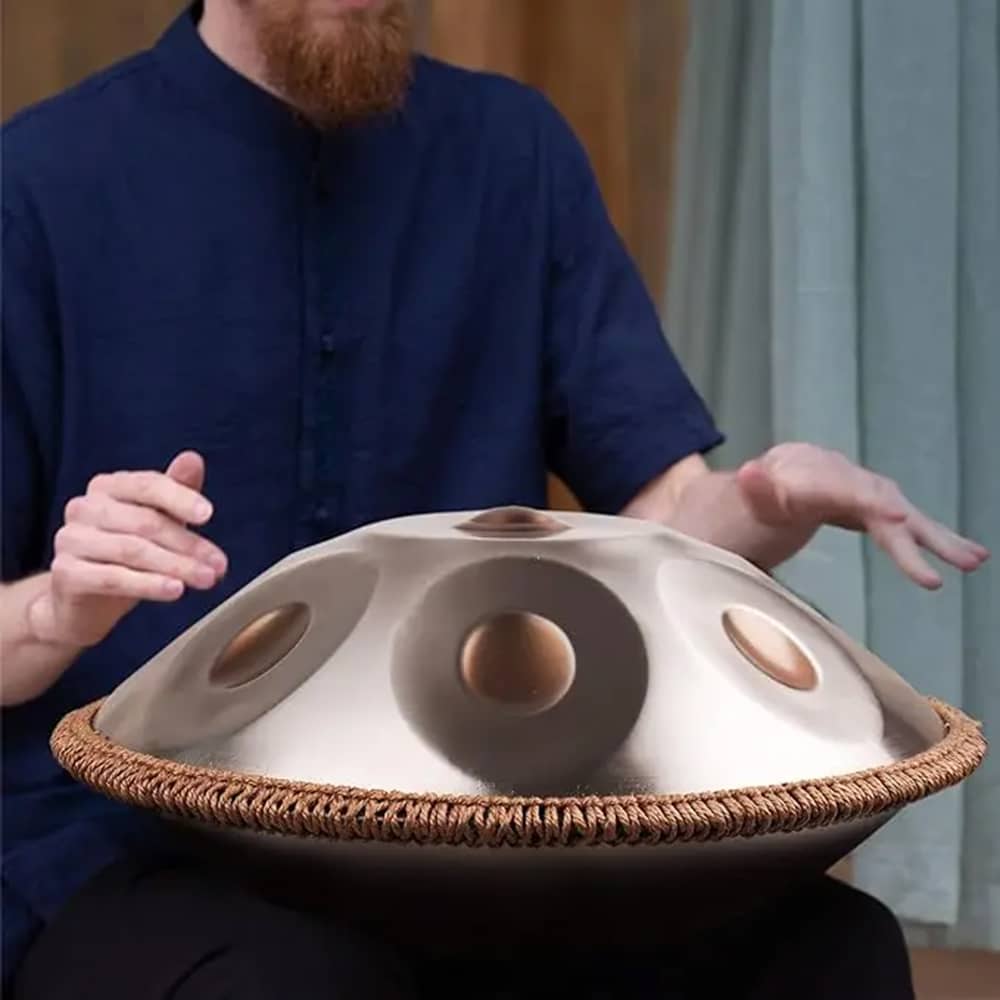


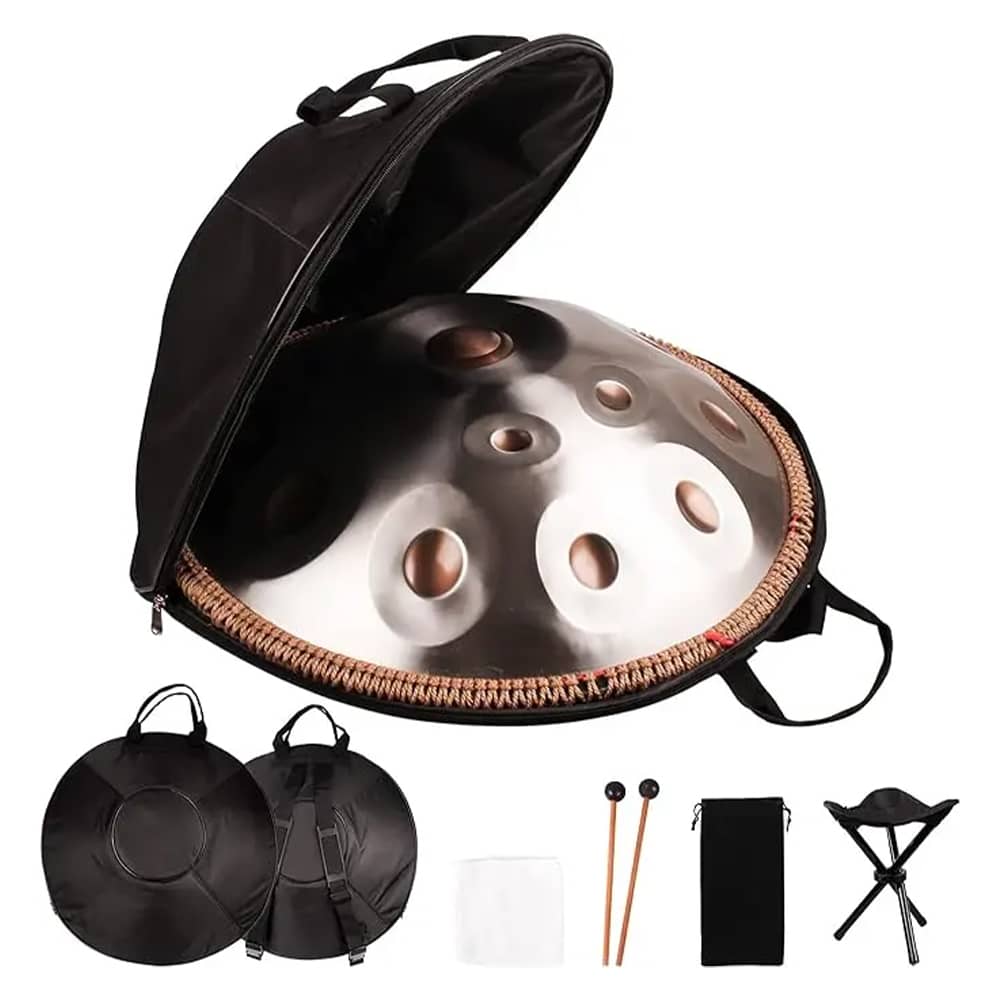

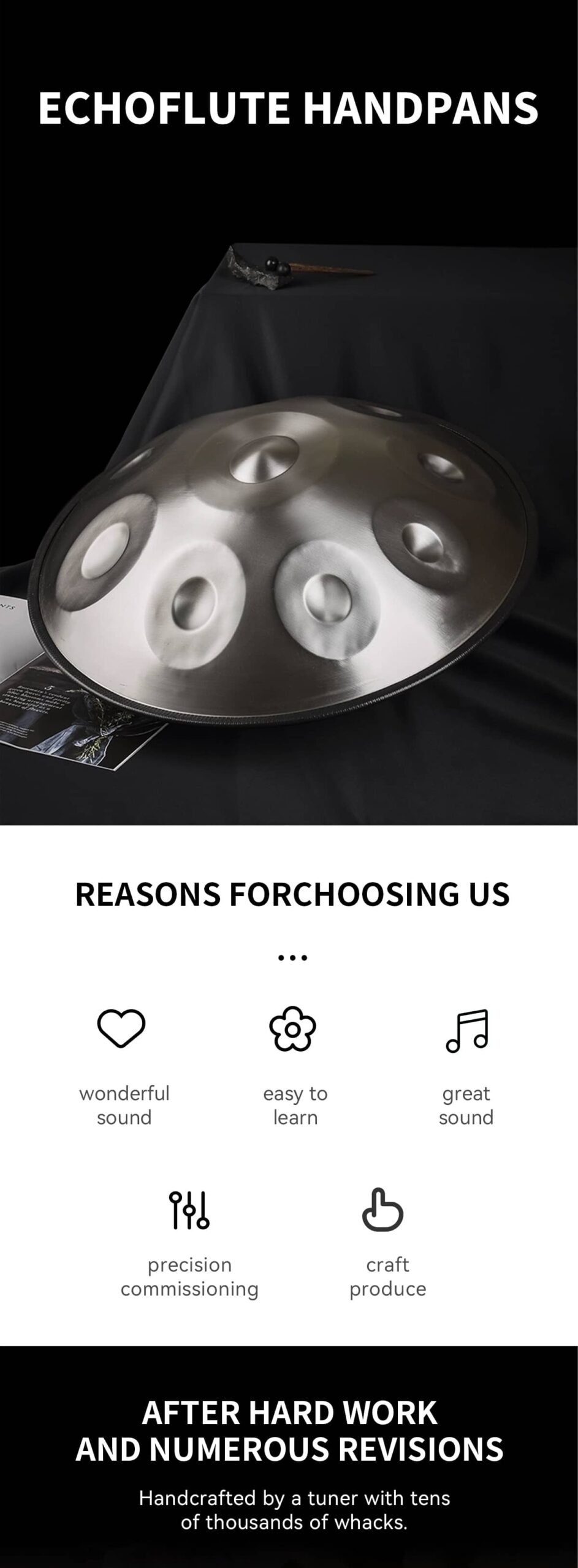
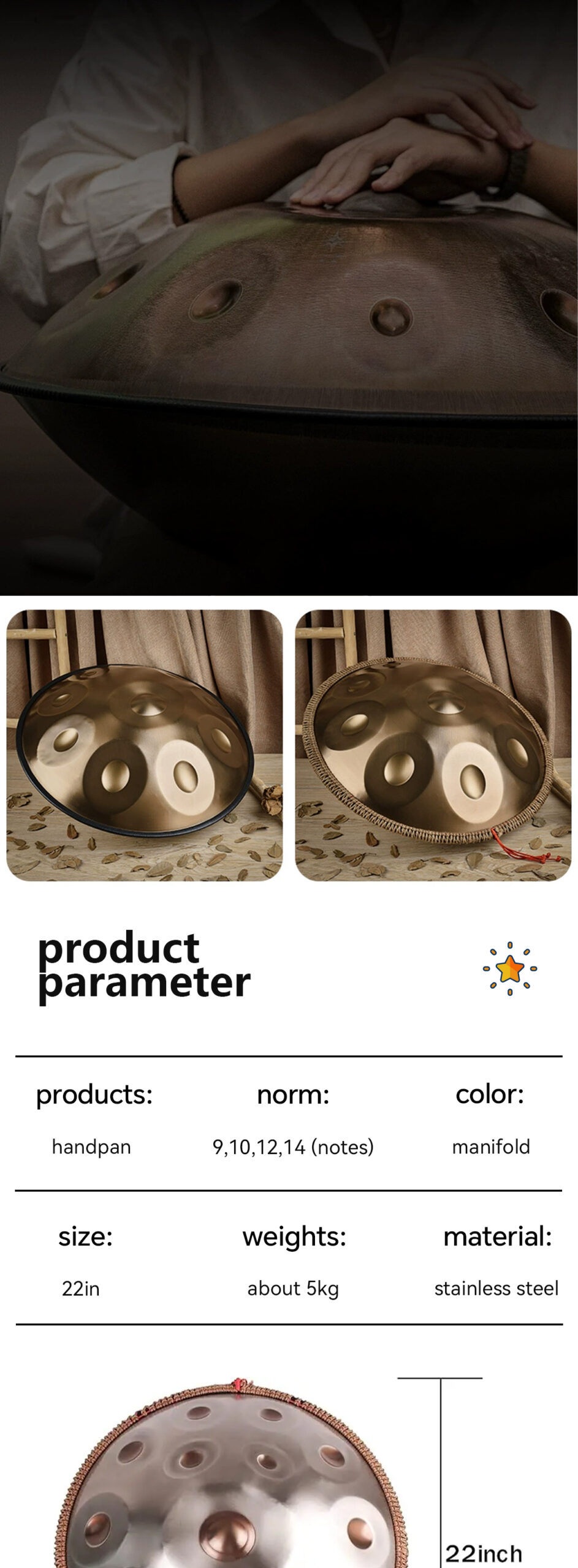
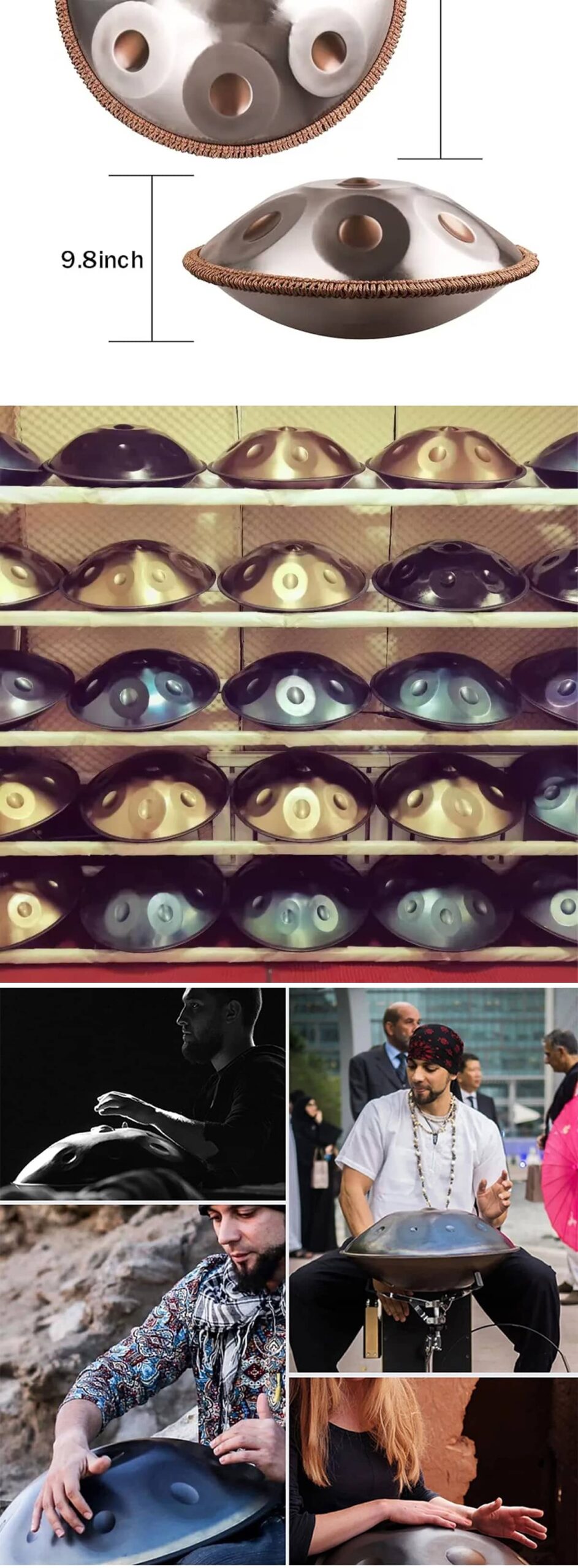
Reviews
There are no reviews yet.